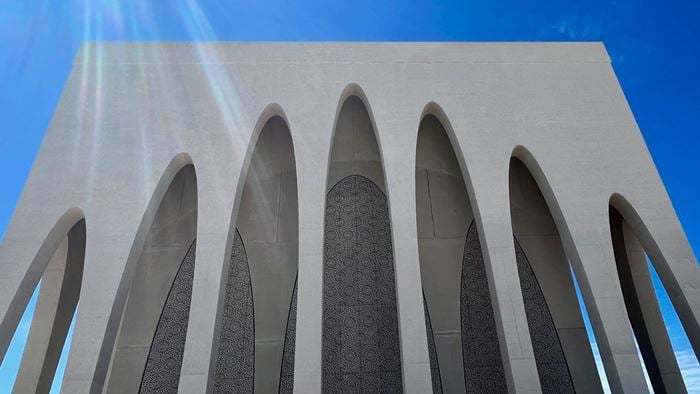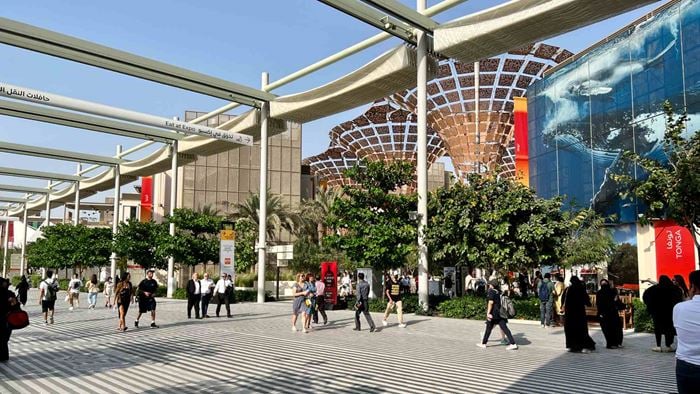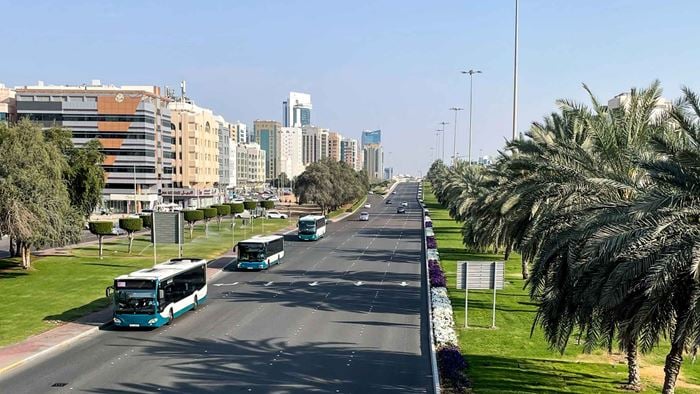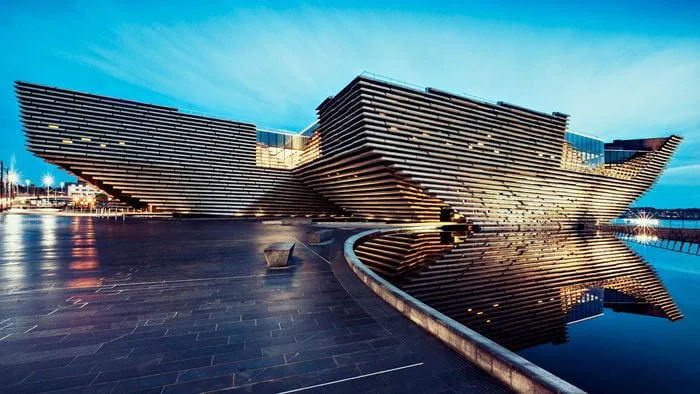Located 17 km from downtown Abu Dhabi, Masdar City is one of the world’s most sustainable cities. The city embodies the latest innovations in sustainable development, while offering a vibrant urban space for its communities, businesses, and research organisations.
Recognising the city’s challenges and opportunities, the Masdar Institute of Science and Technology and the Abu Dhabi Future Energy Company (ADFEC) appointed Arup in 2008 to understand the project’s feasibility, as well as to support its journey to net-zero. Our specialists, from a range of disciplines, came together to lay sustainable and robust foundations that support the city in creating a comfortable, convenient, and resilient space for future generations.
Innovative sun shading
One of Masdar City’s largest challenges was finding a way to reduce the city’s operational carbon while controlling its heat, as temperatures in the United Arab Emirates can reach over 50°C in the summer. We supported Masdar City in exploring new and more innovative techniques for managing heat and minimising energy use. Currently, it is researching a new sun shading technology in collaboration with Airshade, Metadecor and Arup.
While sun shading systems are typically powered by electric actuators, this technology automatically opens and closes its shades in response to air pressure changes that result from temperature variation. Designed for both new build and retrofit applications, the system consumes no energy and will play an important role in the city’s green objectives. By reducing the need for air conditioning and other active cooling methods, this sun shading innovation will help to cut the city’s carbon emissions.
The technology will also create a unique aesthetic effect for onlookers to enjoy, as well as offering a more comfortable acoustic environment than fans, air conditioning units, and other forms of electrified plant, which are often loud when in operation.
Testing the Airshade prototype. ©Airshade Technologies B.V.
While Masdar City will be the first to use this sun shading approach, it is unlikely to be the last. The technology’s potential for reducing carbon emissions and noise pollution is evident, and its mass-scale adoption could transform the way we design buildings on a global scale.
Designing the world’s first net zero energy mosque
Much like the city’s sun shading, our team prioritised a passive cooling approach for its net zero energy mosque. Masdar City hopes to set a new industry standard for houses of worship in the region through an innovative design that blends environmental protection with cultural heritage and community building. The mosque’s design focused on passive ventilation to manage its indoor temperature. We designed the shape and geometry of the mosque to circulate soft winds within its spaces, keeping visitors comfortable while minimising energy expenditure. In addition to this, the mosque’s circular design reduces internal water consumption by 55%, while redirecting 100% of its recycled water to irrigate the outside gardens.
Given that the mosque will be expected to house 1,300 people, passive techniques are not able to fully regulate its temperature. This means that some air conditioning will be required. To achieve the building’s net-zero energy certification, our team implemented smart sensors to monitor indoor conditions, including temperature, humidity and CO2. These sensors will ensure that air conditioning is only activated when it is most needed, lessening the mosque’s energy consumption. Any HVAC systems used will be supplemented by solar power generated on-site, further offsetting the building’s carbon emissions.
“It will be more than a gathering place, a community hub, or a place of worship. It will take people on a cultural, spiritual, and environmental journey, serving as a powerful symbol of our commitment as responsible stewards of the earth. This mosque is our gift to the community. ” Mohamed Al Breiki Executive Director of Sustainable Development at Masdar City
In total, this design enables it to use 35% less energy when compared with international baselines. When considering the energy regenerated by its solar panels, the mosque will also produce at least 100% of the energy it needs over the course of a year. In addition to a Zero-Energy rating from the International Living Future Institute, the building design will target a LEED Platinum rating, the highest international green building certification awarded by the U.S. Green Building Council, as well as Estidama 4-Pearl, the UAE’s highest green building certification.
To ensure that the mosque’s construction is as sustainable as its operation, a minimum of 70% of all construction waste is set to be salvaged or recycled. We were also able to significantly decrease the mosque’s construction costs when compared with conventional approaches, demonstrating that sustainable design – if carefully planned – does not need to cost more.
With its passive cooling, water recycling, and smart sensor technology, the net zero mosque offers a unique space in which community and sustainability come together under one roof, enabling Masdar City’s people to worship together within a tranquil and comfortable place.
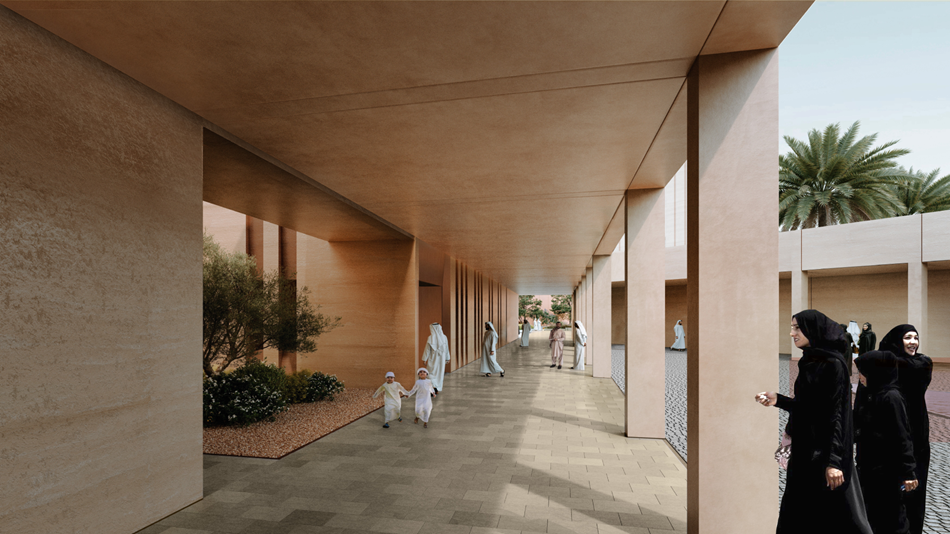
Sustainability training and development
While Masdar City's physical structures raise the bar for sustainable design, its legacy will also be shaped by the people that operate its infrastructure and logistics. Understanding this, ADFEC asked our team in 2011 to develop a sustainability training workshop for all of its employees. Over the course of three days, we completed a host of training sessions that showed employees how to apply sustainable practices to their day-to-day jobs and responsibilities. With this training, Masdar City can ensure that its daily operations are as sustainable as its design principles. Following this, Masdar City recently received LEED Gold ratings for operations and maintenance for three of its older buildings.
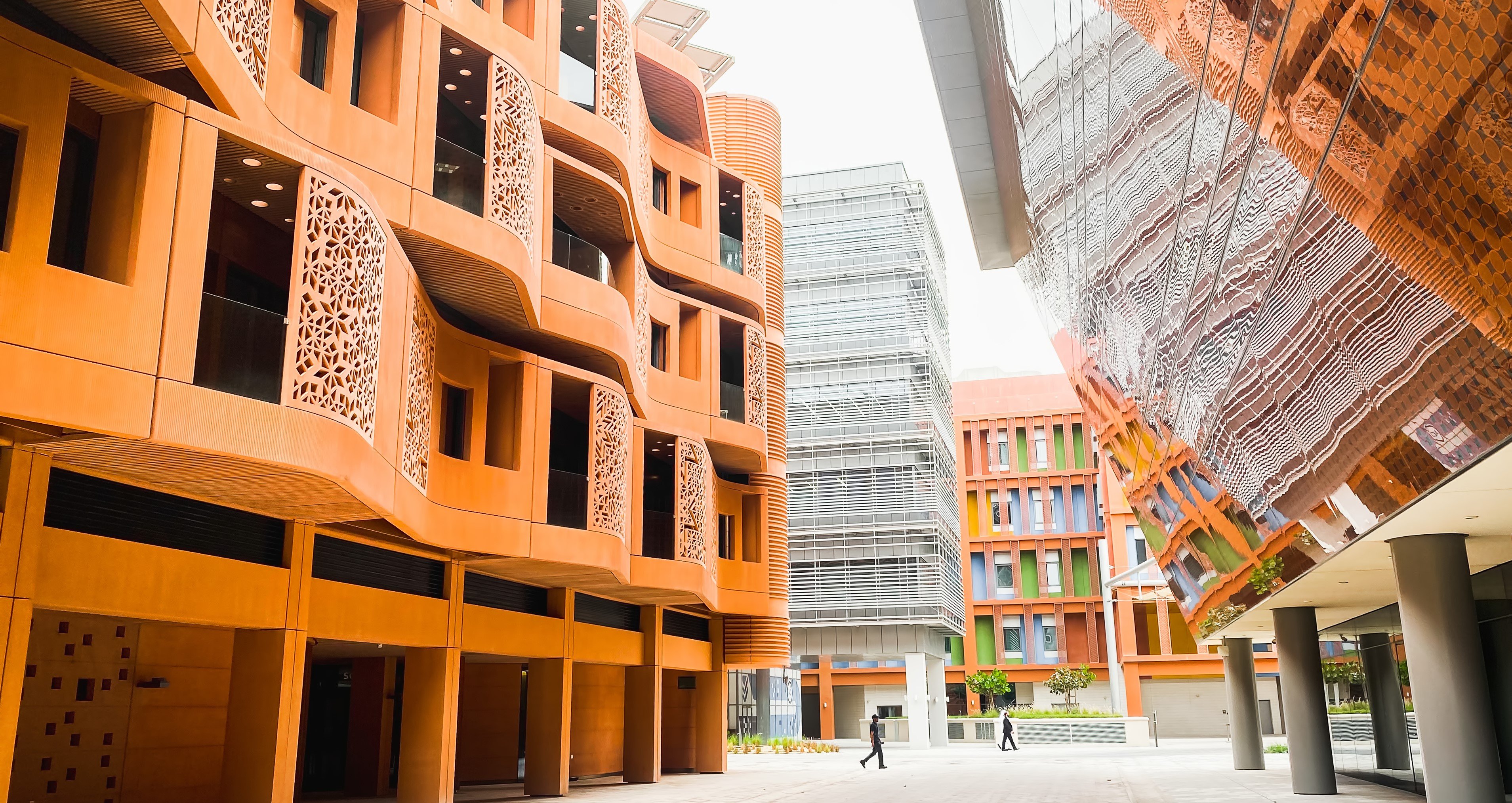 ;
;
.jpg?gray=1&mw=180&hash=22B938908D2E75CB37710197AC734361)
